Points of Impact – Week 6: Hiding In Plain Sight
April 2012 – Week 4
Welcome once more to Points of Impact, the only column on the Web that makes homework out of reading comics! (Okay, maybe that wasn’t my best attempt at a slogan )
Like always
- The BULLSEYE! section presents something that really wowed me. That’s usually when a writer does something unique among his peers.
- The HIT! section picks up on a cool trick that gets used pretty often – mostly because it works – but of which I’ve found a prime example.
- The MISS section however isn’t about praising a good shot but – as you guessed it – pointing out where a writer stumbled so you don’t put your feet in the same hole.
And don’t forget: this column is known to be highly spoileramic! Better go read your comics before forging on!
BULLSEYE!
The “fair-play” mystery in Nathan Edmondson’s THE ACTIVITY #5
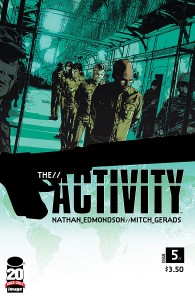 We all love a good mystery. There’s nothing better than a story that calls for some furious head-scratching, making us wonder: Just how the hell did they do that? Getting emotionally invested in a story is nice and all – it is after all the most commonly used way to hook readers – but an intellectual investment is quite another thing to pull off.
We all love a good mystery. There’s nothing better than a story that calls for some furious head-scratching, making us wonder: Just how the hell did they do that? Getting emotionally invested in a story is nice and all – it is after all the most commonly used way to hook readers – but an intellectual investment is quite another thing to pull off.
However, mysteries in comics, n ovels or movies imply solvability. We’re ready to believe that Sherlock Holmes can find a secret room in a house by comparing measures from the interior and the exterior, but we bristle when Hercule Poirot solves a whodunit based on an article he read two weeks before the story itself started. We want a fighting chance to beat the mystery – maybe not exactly the same as the hero – but at least we want that possibility of smacking our forehead and going: Why didn’t I see that?
In THE ACTIVITY #5, Nathan Edmondson puts before us a small mystery: Team Omaha is being detained by a torture-happy police force while on mission in Thailand and they’re getting interrogated . (My, that’s a lot of suspicious quotation marks.)
The heart of the matter is that Team Omaha has apparently failed. No one is going to rescue them from this tight spot since they’re part of a highly-deniable covert ops force and they’re going to get their fingers burned off till one of them spills the beans. The interspersed flashbacks showing team leader First Sergeant Danny Weatherman Locke failing his old squad back in Afghanistan add an additional edge to the already tense situation.
However, as their predicament seems at its worst – Weatherman having broken under the pressure, the team is getting transferred to another holding facility – things suddenly take a sharp turn for the better. They’re left by the side of the road, their escape seemingly all planned out, and the dialogue indicates that the mission was a success after all.
What happened? It turns out that the mission was to be captured just so they could bug the interrogation rooms of the Thai authorities. The detainment, the beatings, the torture – all of that just to get access to the rooms.
Edmondson could stop there and we’d have his word for it. He could just have one of the team members say: “It’s a good thing we pretended to be gun runners so we could get captured and plant some listening devices in our captors’ base.” That would certainly satisfy the base requirements of a complete plot. But then we’d be left with the nagging though: But how did they do it? After all, the team has been shown doing nothing more than suffering abuse for the last several hours. The answer is that while they were being interrogated, every operative used this opportunity to stick a bugging device under the table. They all did so that’s why the mission is considered a success.
That’s not enough for Edmondson. He doesn’t tell us how they did it, he shows us.
He asks the artist to reuse the same panels in which the characters were placing the bugs and – with the use of special overlay panels – points to us how it was done. That way, we get the feeling we might just have figured it out ourselves. Of course, there’s no real way we could have suspected anything, but still Edmondson covers his bottom by retroactively showing us just how plausible his explication is.
The trick to pulling this off is to introduce details in your early pages that can support the feasability of your plot twist without calling attention to themselves. You wouldn’t want to spoil the surprise too early! Don’t forget that – unlike in real life – everything in a work of fiction has some significance and the reader has been trained to expect this. That’s why the murderer is always one of the already introduced characters in an Agatha Christie novel, why the long-lost brother is always another of the leads in a Shakespeare play and why the guy under the rubber mask is the gas station attendant who filled up the Mystery Machine at the beginning of that episode of Scooby Doo.
So you can’t “cheat” by introducing something new or retconning your own story. Instead you have to subvert elements that are taken for granted: background details, subtle costume changes, speech mannerisms and so on. In order to make sure these elements are even more “ignored” than they usually are, distract your reader by focusing his attention on something. The very unusual accurence of seeing Team Omaha in such dire peril served this purpose in THE ACTIVITY #5. We were so enraptured by the plight of the characters that we never noticed what they were doing with their hands. Even their interrogator calling attention to it didn’t registrer at the time.
When the time comes to do your big reveal, you’ll be able to roll out practically the same images you’ve shown the reader before and safely say: “See? You had everything you needed to figure this out right before your eyes.” Then they’ll hopefully take on a shocked expression and spit out witha French accent: “But of corse! How could I have been so stoopid?!” And that’s fun!
For the reader, I mean.
Lesson Learned
Mysteries appeal to our intelligence. If we are to be tricked , we want to feel as though we had a fighting chance – even an illusory one. Always make sure to give the reader that illusion so he doesn’t feel cheated out of the fun of having a possibility of solving the mystery before you give out the solution. To do this, hide your “clues” in plain sight, using the fact that they’re things the reader takes for granted to cover them up. Distracting your reader with a bit of drama will help too. Once you’ve reached the point of revelation, don’t forget to make a visual show of it so your reader will consider your obfuscation fair game. Remember: it’s not as much about giving the reader a real fighting chance at solving the mystery, but more about establishing the credibility of the plot, the soundness of your storytelling ability and – most importantly– making sure your reader enjoys the little game of outthinking the comic!
HIT!
The treatment of inner monologue in Dan Abnett’s THE NEW DEADWARDIANS #2 of 8
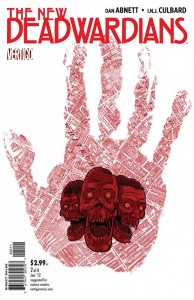 Inner monologue captions are a staple of comics. We’re used to seeing them crowd the page whenever a writer wants to give us a peek into the character’s mind. They offer a counterpoint to conversations, they present running commentary to action scenes and they provide exposition in those quiet times in-between.
Inner monologue captions are a staple of comics. We’re used to seeing them crowd the page whenever a writer wants to give us a peek into the character’s mind. They offer a counterpoint to conversations, they present running commentary to action scenes and they provide exposition in those quiet times in-between.
One thing that seems common to most of these monologues is that they require no effort or attention on the part of the monologue-maker. That’s why we’ve had such brilliant gems as Reed Richards info-dumping to himself while operating complex scientific instruments and Batman rehashing his feelings in purple prose while in the middle of a fight with a dozen armed thugs.
It seems inner caption monologues have been around for so long that we’ve stopped questioning when their use runs contrary to logic.
Not so with Dan Abnett’ THE NEW DEADWARDIANS #2. Here we find Chief Inspector Suttle discussing his most recent murder case with his superior Superintendant Carstairs. As they talk, Suttle starts an inner monologue.
Notice how, as Suttle drifts off into his own thoughts, his captions seem to occupy more and more space in the panels. We even stop seeing his interlocutor: indeed the next panel is a close-up of the enlistment poster and then it switches to tight shots of Suttle himself. This culminates with a large panel on the following page, maybe a flashback to the inspector’s time in the war against what they call the Restless .
At this point, most writers would continue on with the conversation where we left off before the monologue. Not Abnett however as the Superintendant’s line seems to imply:
This shows two things. First of all, monologuing isn’t a free action, but an act that requires the character’s attention. Abnett shows this by taking the other character out of the panels where the inner narration is taking place. Indeed, Suttle is so taken by his thoughts that he’s essentially alone in his own world. Thus the panels where the narration takes place are either shots of Suttle, shots from his point of view or a flashback in his mind. This also has the added advantage of dispensing the artist from showing the awkward image of a second character with his mouth opened and no speech bubble emanating from it.
Second, time goes on as the narrating character is lost in his thoughts. Superintendant Carstairs even remarks on the time Suttle spent daydreaming, bringing him back into the conversation and the real world at the same time. Once more, focusing the reader’s attention on the main character and his viewpoint helps suspending time for a moment before reasserting its hold once out of the monologue.
In the end, what we get is a refreshingly realistic take on the classic device of the first person narrator in comics.
But does this mean that all these other comics that don’t play by these rules are doing something wrong? Does this make THE NEW DEADWARDIANS a better comic by virtue of doing different? Not at all, but when a creator sets out to do something against the usual practice and manages to make it work, I feel like it has to be underlined so we can all benefit from this one step besides the beaten path.
Lesson Learned
Want to have inner monologue captions that stand out? Then acknowledge tham as an action proper, that is something that requires the character’s attention instead of a purely literary device. You’re not writing novels, you know! To pull this off properly, I suggest you limit your panels to only three things: tights shots of the narrating character, shots from his point of view, or shots of his inner thoughts (like flashbacks). This will have the effect of constraining the reader’s attention and viewpoint to this character only and so better reflect the alienating nature of daydreaming while the rest of the world marches on. Just don’t forget to shake the dream off at some point!
MISS
The touch-and-go plot points of Mike Mignola and Scott Allie’s B.P.R.D HELL ON EARTH: THE PICKENS COUNTY HORROR #2 of 2
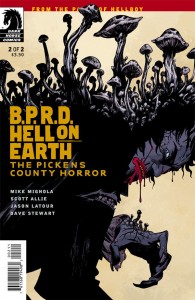 This is unfortunate. It’s the third time that one of Mike Mignola’s comics appears as a MISS on Points of Impact. Last time was two weeks ago for LOBSTER JOHNSON: THE BURNING HAND #4 of 5 and the time before that was when this column was on my blog only, and that was for the previous issue of the same title.
This is unfortunate. It’s the third time that one of Mike Mignola’s comics appears as a MISS on Points of Impact. Last time was two weeks ago for LOBSTER JOHNSON: THE BURNING HAND #4 of 5 and the time before that was when this column was on my blog only, and that was for the previous issue of the same title.
Well at least, this week it’s for another title. B.P.R.D HELL ON EARTH: THE PICKENS COUNTY HORROR #2 sadly wasted the good will generated by its first issue’s Honorable Mention by touching upon a multitude of plot points but not resolving any of them.
First there are the mushrooms. Apparently they can infect people and transform them into mushroom zombie and then mushroom ghosts when they get ripe enough (don’t ask). This is the tragic fate that befalls Agent Peters. Where do the mushrooms come from? Are they the ones causing the fog? Are they kept from creeping into the house by the crosses? Hell if I know.
Then you have the fog. Thick green ominous fog, like the one in that Carpenter movie – what was it called? Probably something like The Ominous Vapor That Seeped Into Everything. Anyway. The fog is deemed dangerous not only because of what seems to lurk in it but also because it appears to cause lightheadedness and fainting spells. Apart from that? Who knows? Not me!
And the vampires? Well they were fairly well introduced in the first issue of the two-part mini but that plot point dried up and fell off in issue two. They sure get talked about a lot but they seem to have no bearing on the plot. Are they the figures we see moving through the fog? Maybe. We get reunited with them in the last couple pages, only as if to tie up that dangling dead end.
(Speaking of vampires, here’s a fun fact: there’s a Pickens County in South Carolina that shares a border with a North Carolina county called Transylvania.)
Finally, there’s the whole Hell on Earth event that took hold of the B.P.R.D titles since last year. What connection do any of these plot points have with it? Does anything here have a significance I should have picked up on? Will any of this come back later down the line? Or is BPRDHoE: TPCH just another stop in this horror tourism cruise?
The fact is that there’s no link between any of these plot points, as if the writers couldn’t decide on what to include in their story and just threw in everything they liked, never putting any thought on how the whole mess would fit together. Not only that but none of the plot points are explored in any meaningful manner. This is the second part of a two-part mini so this should be the issue where most of the questions get resolved. Instead, what we get is more questions.
Essentially, it’s the complete opposite of what THE ACTIVITY #5 achieved: the mystery offers no satisfying solution because even the writers seem to not have figured it out. This results in a story from which we walk away like Agent Vaughn does in the end: disoriented, tired but happy to have escaped. I’ll let the poor man have the final words:
Well said, sir.
Lesson Learned
From the very start, as you’re plotting your story, make sure you know exactly how it ends and why it ends that way. Then, as you build your plot towards that ending, only introduce plot points essential to attaining that resolution, streamlining out anything extraneous and making sure it all connects. That way, your reader will feel the satisfaction of having read a story instead of a collection of unrelated events all revolving seemingly at random around the same characters.
Honorable Mentions
- Jimmy Palmiotti and Justin Gray created a fantastic multiple-page almost silent fight scene in ALL START WESTERN #8, proving that you don’t need dialogue to write good comics.
- I’d like to think Scott Snyder read last week’s Points of Impact before writing a great expectation-dashing twist in AMERICAN VAMPIRE #26, but you and I both know that would be a sad, sad lie to tell myself.
- Speaking of dashed expectations, Mark Millar completely and successfully reverts something he established last month in SUPERCROOKS #2, making us stew for a whole month with our completely mistaken view of a character.
Dishonorable Mentions
- Yeah, Mike Mignola and Scott Allie again with B.P.R.D. HELL ON EARTH: THE PICKENS COUNTY HORROR #2. Roughly half that comic was a fight scene that didn’t advance the plot.
- A mixup at my LCS made it so I couldn’t get a copy of Alex Link and Riley Rossmo’s REBEL BLOOD #2 this week. Granted, that’s more of a dishonorable mention against fate then against the authors.
That’s all for this week! Keep reading, keep writing and keep your hands off my comics if you’ve been eating chips!
* * *
 Yannick Morin is a comic writer, editor and vivisector hailing from the frozen reaches of Quebec City. You’ve just caught him with all of his endeavors being drawn by artists right now. You will however soon see his work in IC Geek Publishing’s JOURNEYMEN: A MASTER WORK anthology (spring 2012) as well as in ComixTribe’s OXYMORON anthology (fall 2012). Of course he also has a few other projects on the side but it’s all very hush-hush at this point as you can imagine.
Yannick Morin is a comic writer, editor and vivisector hailing from the frozen reaches of Quebec City. You’ve just caught him with all of his endeavors being drawn by artists right now. You will however soon see his work in IC Geek Publishing’s JOURNEYMEN: A MASTER WORK anthology (spring 2012) as well as in ComixTribe’s OXYMORON anthology (fall 2012). Of course he also has a few other projects on the side but it’s all very hush-hush at this point as you can imagine.
Apart from complaining about running out of time for writing, Yannick also acts as ComixTribe’s Digital Comics Manager, making sure the electronic shelves are well stocked with the Tribe’s offerings.
For more of what spills out of his brain, have a look at his blog Decrypting the Scripting. You can also feed his ravenous ego by following him on Facebook and Twitter.
Related Posts:
Category: Columns, Points Of Impact

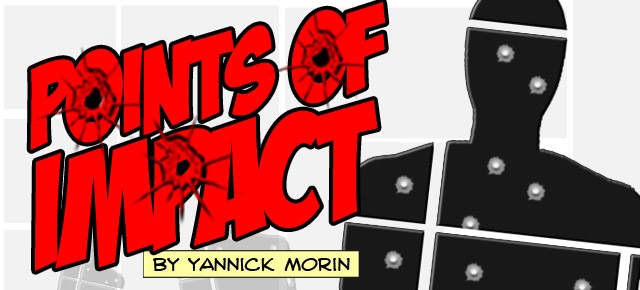
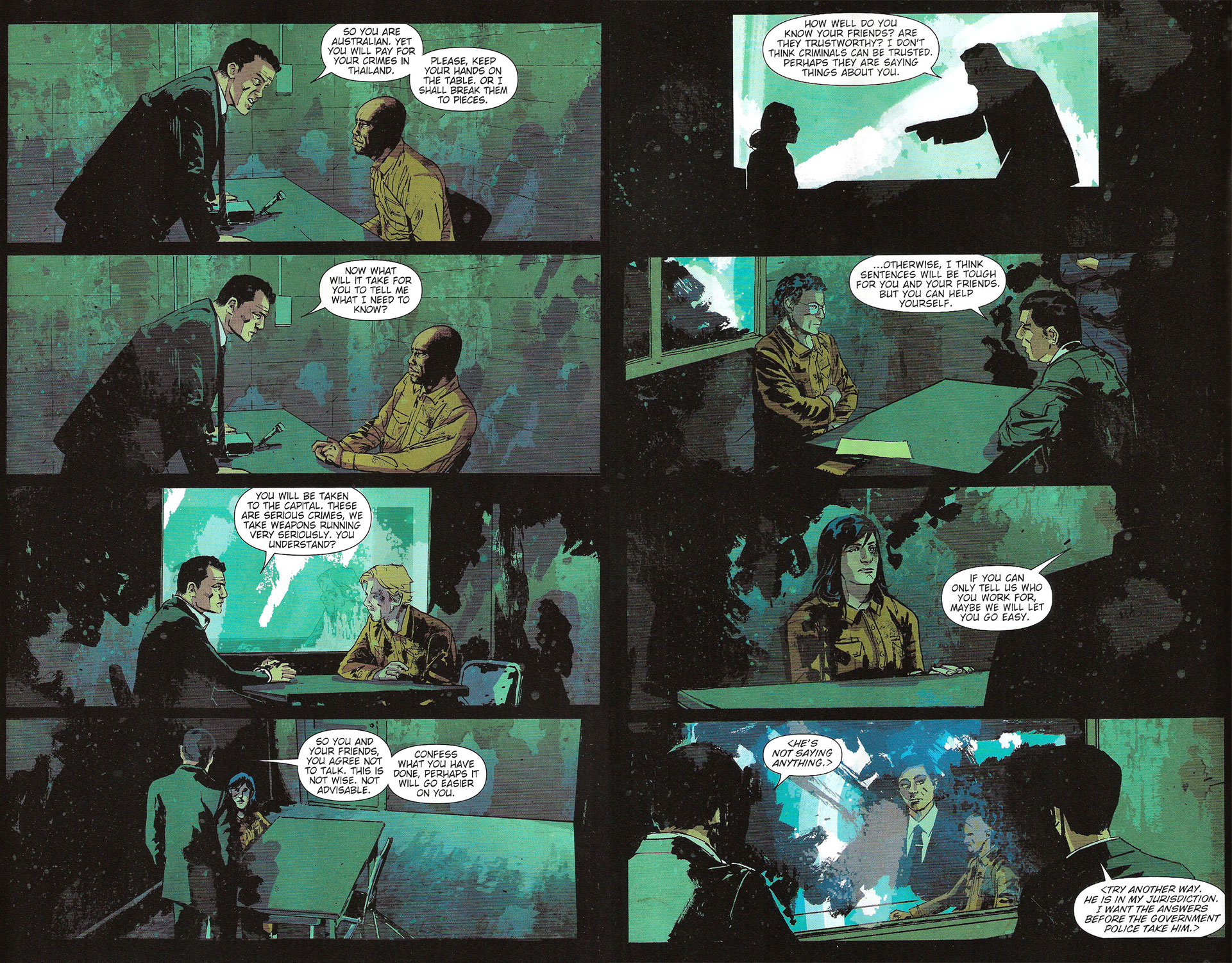

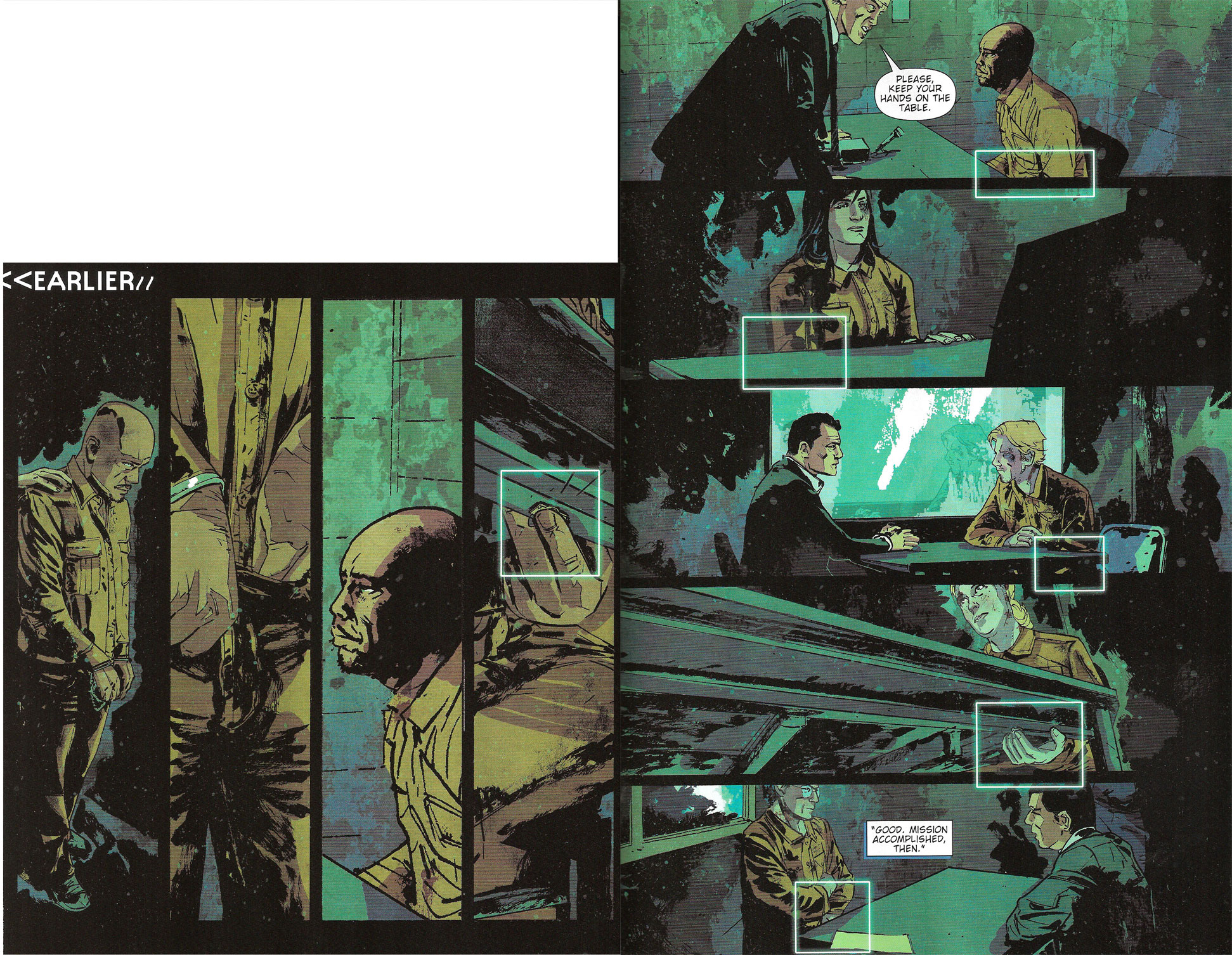
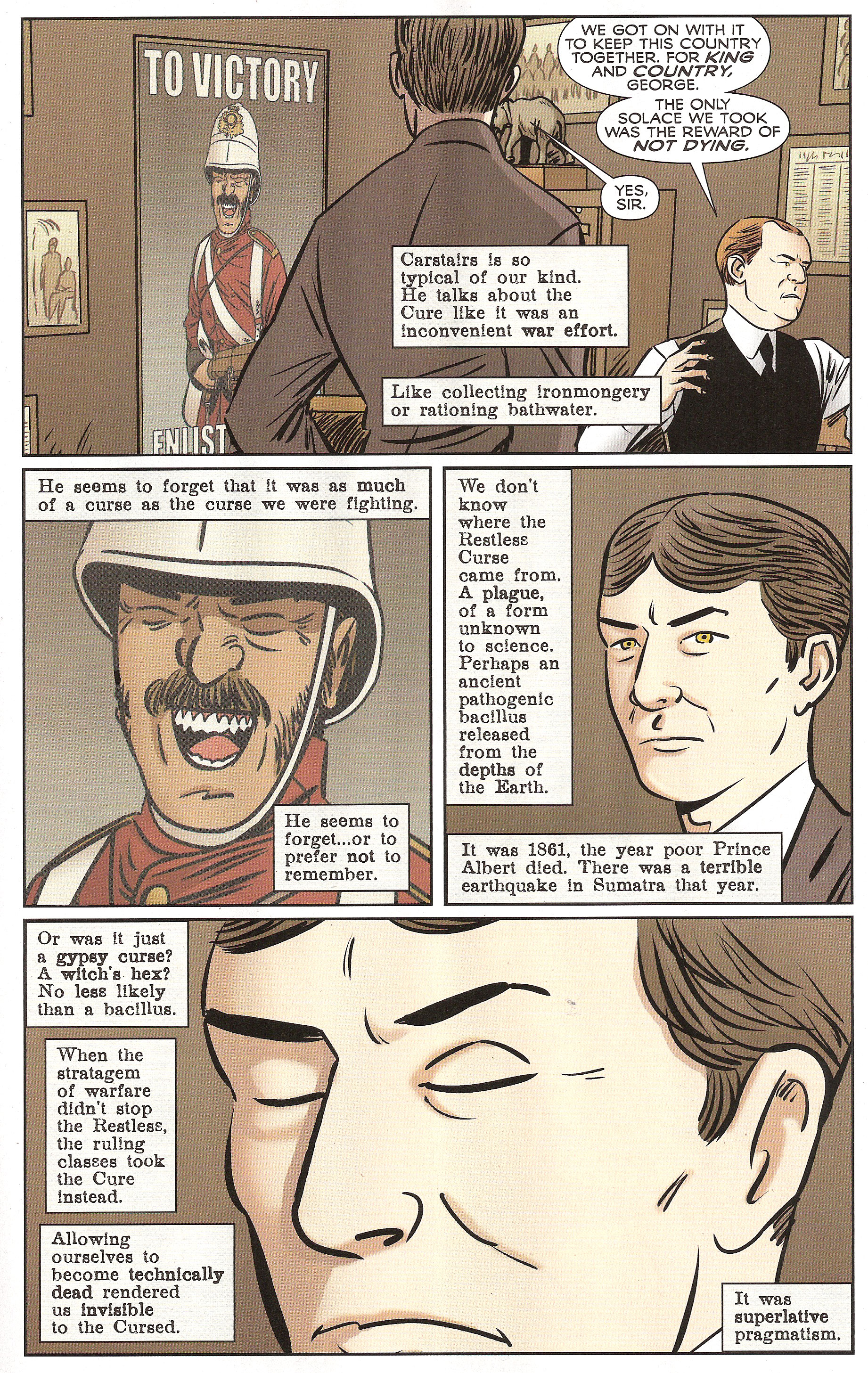
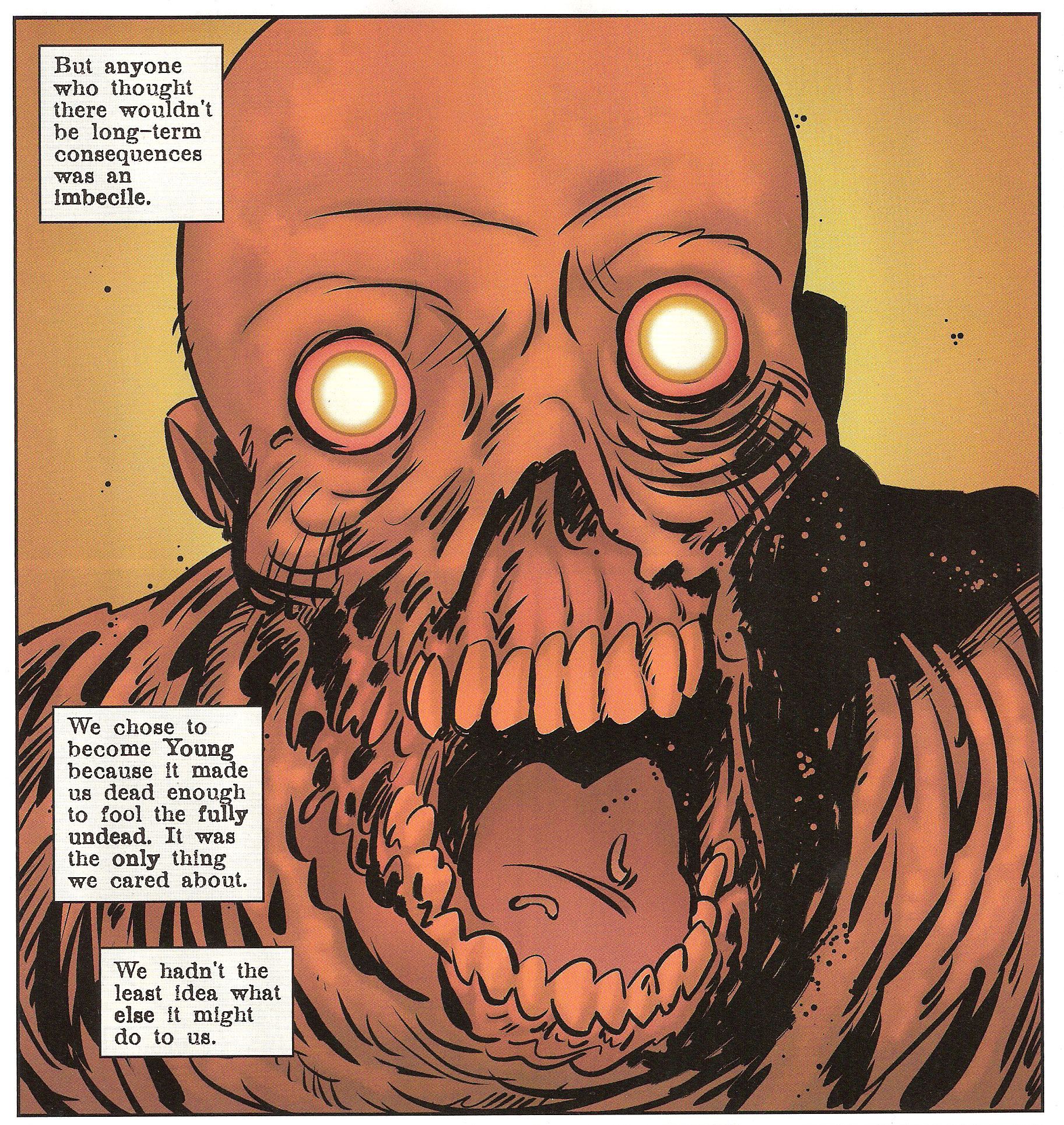


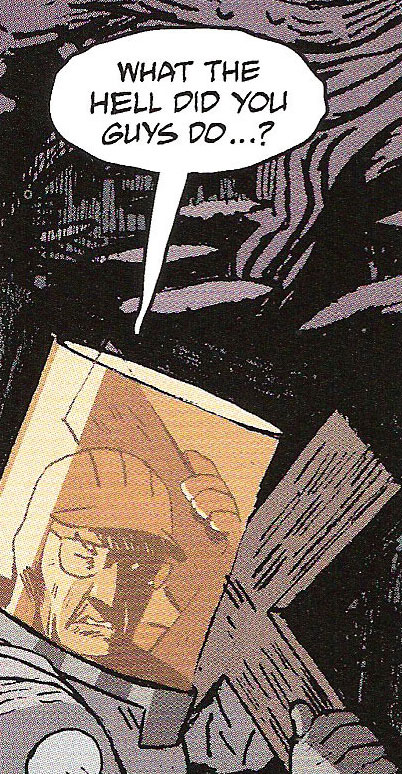
















I agree with the assessment of The Activity issue. Always great when you had it in front of you all along, but couldn’t see it (I also love this device when used in film). I’m not reading The Activity in issues, but I wish I was now!
Great lessons learned this week!
In the honorable mentions, what Millar book are you referring to?
Thanks for another great column!
THE ACTIVITY is a constantly good read, marvelously well-written, week after week. I highly recommend it! It makes me expect great things from Edmondson’s next title, DANCER starting in May.
And that Millar book was SUPERCROOKS. Thanks for pointing out my error. It looks like I’ll need to ask Steven to edit my column!
Thanks for reading and commenting, Wes. I really appreciate it!
Edmondson definitely has a good streak going. I’m really looking forward to Dancer, as Who is Jake Ellis was one of my favorite books from last year. Is The Activity #5 the end of the arc? I may need to jump on the issues and then grab the first trade once it comes out.
How are you enjoying Supercrooks thus far? I’ve been giving all the Millarworld books a shot as they come out, but this is the first one that really sucked me in.
THE ACTIVITY is a book that’s more done-in-one. Although there is a hint of a higher overarching plot, it doesn’t prevent you from enjoying the “mission of the month”.
I must say I’m very satisfied with SUPERCROOKS so far. I had been disappointed with KICK-ASS 2 and SUPERIOR as I felt Millar was falling back into his old powerless-loser-is-suddenly-thrust-into-his-own-teen-power-fantasy routine. What I got of of SUPERCROOKS instead is a very entertaining superpowered caper. A pleasant surprise indeed!
Nice, Yannick!
I really liked how you explained the clues in a mystery and how it works best not to cheat your readers. That’s one of the many complaints people have when reading newbie mystery comics, and I love how you give such details explanations, showing the readers/writers just how to create great storylines/clues. You even used great examples in the summary with Agatha Christie, Shakespeare, and Scooby Doo. (Perfect!)
May I place a link on the ICG Tumblr to this? I think it’s such a great resource.
Also, your hit and miss section was great, too. Love, again, how you provide such details examples to prove your points. This is wonderful for writers who need to shown not told.
Thanks!
Dev
Thank you for your kind words, Dev! I’m very happy you like the column!
I think concrete examples are the main strength of Points of Impact, especially since they’re taken straight out of the comics that came in the same week! I like to think that people read their comics and then turn to this column as study material – or just food for thought!
As for mysteries, I think they’re one of the hardest kind of stories there is to write. Writing inspiring, heart-wrenching or pulse-pounding plots aren’t easy either, but forging a plausible/solvable enigma is quite another thing. That’s why I’m always happy to see a writer tackle that challenge and show us how to do it at the same time.
You may of course link to your heart’s content!
Thanks again for reading!